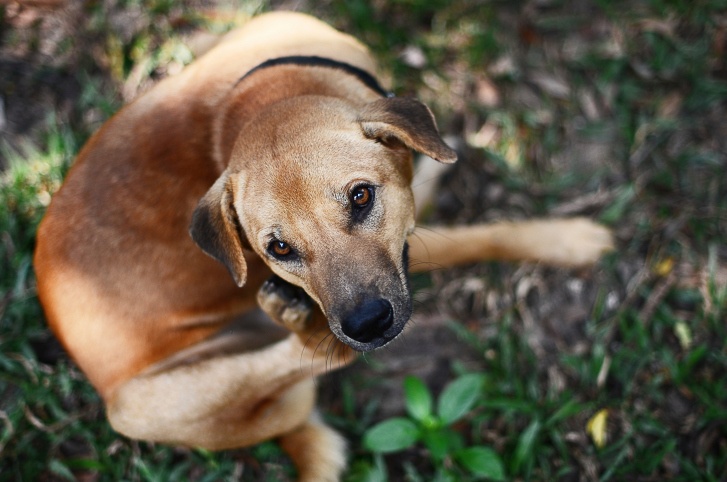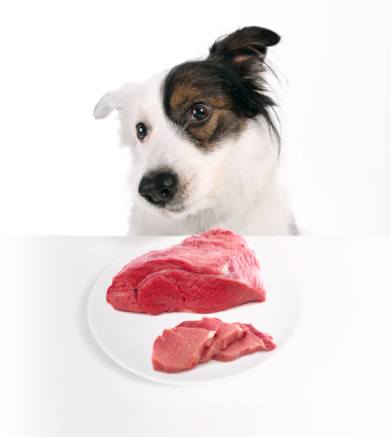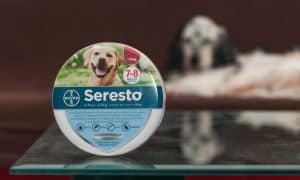“This post contains affiliate links, and I will be compensated if you make a purchase after clicking on my links.”

Perhaps you already know that fleas are tiny, brown, wingless creatures that can jump 100 times their own height. One female flea with produce 20,000 eggs within a period of only 3 months. Also, it takes anywhere from 3-6 weeks for flea eggs to hatch. Are you sufficiently grossed out by now? How about the fact that these disgusting little vampires survive solely on your pet’s blood spreading to other animals in the house and even biting your children in their quest for a food supply.
I’ve also lived a most horrid dilemma with my own dog and cats with regard to fleas. If you’re suffering this with any of your animals, believe me when I say, you have my full abiding sympathy. Not only does the animal feel preyed upon with constant itching, agitation and skin issues, but as their owners, we feel their suffering, often feeling impotent to resolve it while our homes become infested with these invasive creatures.
With both our Samoyed dog and our cats, I tried the typical natural solutions such as garlic, probiotics and brewers yeast, however, nothing worked until I addressed one primal aspect of my pet’s health; their diet! Believe me when I say that for months, I was like a crazy woman on a quest to try to fix this with homeopathic remedies, even once resorting to allopathic drugs as my cat was suffering to the degree that I thought I might have to put him down, his skin and immune system mimicking one of the worse plague-like states I’d ever seen.
Ollie, my children’s cat, had pulled out so much fur that he was bald on his back with raised bumps like warty chicken skin. He was emaciated and I felt devastated that I was throwing everything in my arsenal at this creature as this chronic state just would not budge an inch. I was actually reading Aleks Mikic’s book “Immune Doggy” and in there, I found the golden key, the solution to the fundamental problem.
In there, she’d cited a reference by an author named Ann N. Martin called, “Foods Pets Die For.” In that book, I read how dead animals are harvested from unnamed sources to make dog and cat kibble and wet food and then a toxic pink slime coats the food to try and kill off all of the errant bacteria and drugs the animal received, however, any nutrition that might have been derived from this disgusting concoction is all completely destroyed.
Now I’d always bought the really expensive, organic food for my dog and cats, however, it is still cooked, the enzymes destroyed in the processing. Also, pet food is not regulated so the source of that meat could be coming from anywhere. Did you know that commercial pet foods harvest dead animals from veterinarians? Think about the toxic drugs that those animals may have been on and the surgeries they’d potentially suffered before their demise. It turns your stomach doesn’t it?
Keep reading as I’ll explain to you what I started to feed my small herd of carnivores – To this day, I’m still astounded.
Raw Food

When I began to feed my dog and cats raw food, I was astounded at the results. As mentioned my one cat who was very sickly, suffering horrible fur loss, mottled skin with flea bites all over his neck showed the most extreme improvement right away. My dog became much more enthusiastic with a greater verve for life, her breath and teeth became magnificent, with no plague, from chewing on all those raw bones (never feed cooked poultry as this is dangerous due to splintering for dogs and cats), her coat also becoming more glossy and much less matted. With our Samoyed, we really noticed this phenomenon with 3 layers of hair resembling sheep’s down as you get closer to the skin.
Within a week my cats health was wholly being restored. My dog’s fur was magnificent, glossy and so much easier to brush out, that matted nests just releasing. My sickly cat was putting on weight, his coat was growing back in and his skin was healing beautifully. It was like a miracle. Aleks Mikics had written about how any brand of store bought kibble is not found anywhere in nature as it is not natural for carnivores to eat denatured or cooked foods. This is what was causing my dog and cats to suffer different levels of malaise, skin conditions, flea infestations and ill health.
I began, slowly, to introduce raw foods like chicken giblets, chicken wings (raw only as cooked chicken bones will sliver and break into shards that can cause suffocation), moose meat, chicken, beef hearts, fish heads, ground beef mixed with raw eggs, liver, and anything that the market butcher or farmer would either give away or sell for cheap that my dog and cats might like. At first, they ate like gluttons. I think it may have been fear that they had to consume as much of it as possible of this natural more resonant nourishment for fear of tapping out their source.
At first, I was worried about how many times a day they would need to be fed. With kibble, I had the luxury of traveling overnight, leaving my cats at least with a supply of kibble while my dog stayed at my friend’s kennel. However, over time, their appetites evened out more and more. Now, of course my dog would follow me anywhere thinking I just might feed her every moment of the day as I was using raw food like hamburger in a plastic bag in my fanny pouch strapped to my waist for training.
The only thing that I would add to their food, periodically, was some brewer’s yeast and garlic (also addresses any tapeworms) about once or twice a week during the summer just to be extra vigilant during flea season (please note that neither of these additives worked on the kibble and canned cat food diet prior). Also, I would add a little olive oil or evening primrose oil on occasion to ensure they were getting their omegas, a Vitamin B1, as well as a multi-billion good bacteria probiotic. You may already know that you can buy probiotics at any health food store and safely use them for humans and for your dogs as you can’t cause harm to either organism. Again, I’d tried the probiotics prior to no avail. This approach to raw food, thankfully, has enabled our domesticated carnivores to live long and healthy lives.
Natural Flea Treatments

To scope out the extent of your pet’s infestation, carefully separate the hair on their haunches and back. Admittedly it is harder to scope out the fleas themselves, as well as, the deposits of black feces on pets with darker skin and fur. Wipe the infested area with wet paper towel. If you see dissolved red blood, like red brick dust, you’re definitely suffering a flea infestation.
Part of the devastation of flea infestations is that you have to treat the home as well as the lawn and garden if your pets spend time outdoors. I made up spray bottles of vinegar and essential oils to address fleas and ants too. Bedding will need to be washed where the animal slept. Also, carpets need to be vacuumed regularly as the flea eggs proliferate and hatch over a 6 month span of time.
For your garden, mix ½ dish soap and ½ beer (yes, you have my sympathies in advance) applied to the lawn hose sprayer. Diatomaceous earth is also very effective at killing off fleas in any stage of their lifecycle, but it takes about 3 weeks to be completely effective, but once it kicks in, it is highly effective. Relentless persistence is critical in all cases, however, once you change their diet to all raw, you can let a lot of this extensive regimen go.
The other thing that is safe for both dogs and cats is some orange, lemon or grapefruit essential oil diluted in a water bottle. Just a drop or two for every ½ cup of water and then sprayed onto the affected area and also on window sills and around door frames where your pets cross the threshold with any parasites and fleas. Do not use Tea Tree Oil or Citronella as these essential oils are harmful and extremely toxic to your pets!
Sulphur and Black Walnut hulls bought at your health food store in capsule form and sprinkled on your dog, or cat’s food, can be very effective in addressing fleas on their bodies. This method will also repel ticks and mosquitoes as well. Many folks tout the advantages of spraying their pets with apple cider vinegar as an effective flea treatment. My dog hated when I did this and my cats considered it a violent trauma!
Now if you need to bathe your flea infested pup, you can use an organic herbal-based shampoo. Be sure to avoid sodium lauryl sulfate * as this foaming agent is a known carcinogen. Any all natural shampoo containing geranium, juniper, lavender, rosemary, bergamot, pine or cedar will help. Start by dampening your pet’s head (without dousing his ears, eyes or snout of course) as the fleas will always head to higher ground.
You can also get a thick layer of shampoo all around his neck, chin and head area so that you kill off the intruders before they have a chance to escape. I would pour small amounts of water into my hand and lather up my dog’s head area creating a soapy barrier that will kill off the fleas attempting to get through the watery, soapy barrier. It is good if you can leave the herbal shampoo with essential oils on for a good 15 minutes with a wet towel draped over your dog so he doesn’t shake himself into oblivion while the watery suds drown the fleas. Rinse your pup well and dry him by the woodstove or with a blow-dryer if he’ll let you if the temperature is cold.

As mentioned prior, be sure to address the problem where your dog sleeps, door frames, window sills by spraying the areas with apple cider vinegar and essential oils or you can mix up a pound and a half of diatomaceous earth (garden store only), with the same amount of natural borax (garden store only) and a cup of salt (just the cheap stuff). The diatomaceous earth (wear a mask while spreading it) works well due to the tiny glass-like particles that act like shards with spines will puncture the flea’s exoskeleton (Yes, I’m sure you’re glad you asked). The borax and salt absorb the flea’s desirable, moisture rich environment making it too dry for them to want to nest.
Sprinkle the latter mixture above,while wearing a mask, on your carpets, corners, your dog’s bed, and then wait about 3 days before vacuuming it up. Try not to let your dog breathe the diatomaceous earth mixture continually while it is spread throughout your house so if he can be cordoned off in another room or can stay at a friends, that would be ideal. You may have to repeat this process a couple of times depending on how tenacious the infestation is.
Note: Do not use Pool Grade Diatomaceous earth as it is extremely dangerous and can cause scarring of your dogs lungs like asbestos poisoning or silicosis.
Some of the most popular, and effective, remedies for flea infestations are:
Apple Cider Vinegar
All Natural Dish Soap like Dr. Bronner’s
Garlic
Amethyst
Salt
Diatomaceous Earth
Essential Oils
Brewer’s Yeast
Borax
Neem Seed Oil
Mites
Mites can produce mange in your dog which can show up as hair loss, scaly or crusty skin. There are three types of mites; demodectic is not contagious and may not even itch, the sarcoptic type is very contagious and wildly itchy while the third type, cheyletiella type is also contagious and only mildly itchy. Mites are also effectively addressed using the same remedies above for fleas or the oatmeal shampoo with peppermint or lavender oils below.
Source: bit.ly/1tZ4hQu

Allyson McQuinn, DHHP, JOAH has been studying natural medicine for over 20 years. Working as a Physician with both humans and animals in her international practice at Arcanum Wholistic Clinic by Skype and by phone, she is able to effectively prescribe and ship remedies worldwide.
She has also authored over a dozen books, one of them being “Natural Home Pharmacy For Dogs; How to Use Practical Tips, Homeopathic Remedies, Nutrition, and Training for Your Dog’s Natural Health” available on Amazon. Allyson’s beloved “Sammy” Terra is just one of many rescued animals she’s treated using natural remedies on her farm.
























Sandra Holloway
says:I agree with your assessment of the raw diet. I question the use of garlic. There is disagreement as to whether garlic is safe for dogs. The compound n-propyldisulfide, found in garlic and onions, can result in fatal blood disorder. What amount of garlic would be safe for a dog to consume daily? Is there any evidence that the daily addition of garlic in a dog’s diet causes a cumulative negative effect? I am familiar, within my family, of a 70-pound collie mix that suddenly appeared ill, was actually severely anemic and died overnight while in a veterinary hospital for treatment. The owner, my relative, had used garlic for years. This is not to say the death was caused by, nor was it a diagnosis that the veterinarian attributed to, the use of garlic in the dog’s diet. However, to this day, the owner still blames herself for the dog’s sudden, and fatal, illness.
Jan Champagne
says:What about salmonella poisoning?